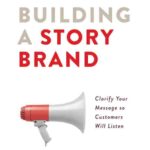The questions we ask often determine the solutions we find. Sometimes, it’s not the answer that’s wrong—it’s the way we framed the question in the first place.
Take, for instance, a fascinating story from a European village centuries ago. The town was hit by a mysterious plague that caused victims to fall into a coma so deep it mimicked death. The tools and understanding of the time were primitive, and often, doctors couldn’t distinguish between someone who was truly dead and someone who was in a death-like coma. While most victims died quickly, a few shockingly woke up—sometimes after they’d already been buried.
One such chilling incident rocked the village: a person had been discovered to have been buried alive. Horrified by the realization, the townspeople convened to address the issue. The elders were divided.
One group asked, “What if we accidentally bury someone alive?” Their answer? Bury a loaf of bread and a jug of water with the deceased—just in case they woke up underground. Sensible, but expensive.
Another group asked, “How can we be absolutely sure the person we bury is truly dead?” Their answer? Equip each coffin lid with a wooden stake positioned directly over the heart. That way, when the lid closed, it would pierce the heart—eliminating all doubt.
Both groups were addressing the same core problem, but their questions shaped two dramatically different solutions.
The Invisible Influence of Framing
This parable is more than a tale of old-world medicine—it’s a masterclass in the psychology of problem framing.
Business owners, entrepreneurs, and leaders often get stuck chasing the wrong solutions because they’ve asked the wrong questions. They become fixated on what seems to be the problem instead of considering alternative viewpoints that could unlock new, more effective answers.
For example, if you ask, “How do I get more traffic to my website?” you might end up spending money on ads, SEO, and social media. But if you instead ask, “How can I convert the visitors I already have?” your focus shifts toward improving content, user experience, and calls to action. The shift in framing changes everything.
Similarly, asking “Why aren’t we growing faster?” may lead to answers involving marketing or hiring. But asking “What’s preventing existing customers from buying more?” could uncover more profitable and immediate growth opportunities.
First Principles Thinking and Cognitive Tunneling
The story of the coffin stake is a vivid reminder to use what Elon Musk and others call first principles thinking—breaking problems down to their essential truths rather than relying on assumptions or conventional wisdom.
Many of us suffer from “cognitive tunneling,” a mental habit where we stick to the first idea that makes sense. We focus on optimizing within an existing frame rather than challenging the frame itself.
That’s why the most valuable tool in your problem-solving kit isn’t more data or even more experience—it’s curiosity about how you’re asking the question.
Business Examples of Question Reframing
- Marketing Campaigns:
- Old question: How do we make people care about our brand?
- Reframed: What already matters to our audience that we can align with?
- Customer Complaints:
- Old: How do we reduce complaints?
- Reframed: What can complaints teach us about unmet expectations?
- Hiring Challenges:
- Old: How do we find better people?
- Reframed: How do we make our workplace more attractive to great people?
Legendary investor Charlie Munger, the long-time partner of Warren Buffett, famously advised, “Invert. Always invert.” His principle of inversion encourages us to think backward as well as forward. Rather than asking only how to succeed, ask how you might fail—and avoid it. In business, this could mean asking not just, “How do we grow?” but also, “What are we doing that might actually prevent growth?” or “What would a competitor do to steal our customers?” Inverting a problem can illuminate blind spots and create clarity where direct questions may fall short.
Practice Shifting the Lens
The next time you’re stuck, try this simple exercise:
- Write down the question you’re trying to answer.
- Ask yourself, “What assumption is baked into this question?”
- Flip the assumption. Ask the opposite. (Always invert)
- Notice how different your possible solutions become.
It’s not magic. It’s mental reframing—and it’s one of the most powerful skills a leader can develop.
What question are you currently asking in your business—and how might a simple reframe lead you to a better solution?












